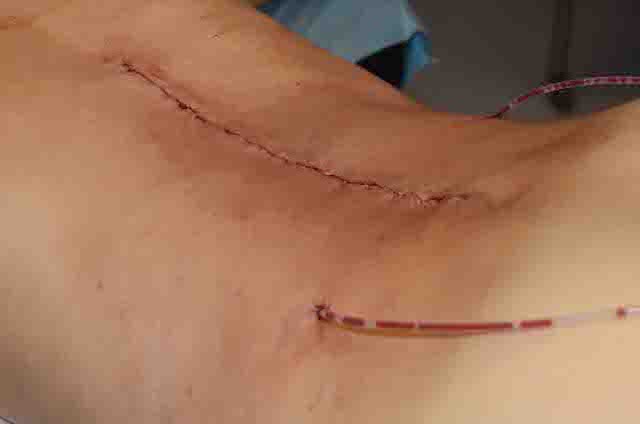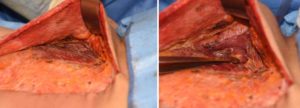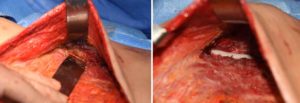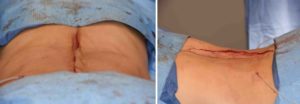Background: Waistline narrowing is most commonly done through standard body contouring methods such as liposuction and tummy tuck muscle plication techniques. But when those surgical maneuvers are unable to achieve the patient’s goals or they are not a candidate for them due to a lean body frame, then more advanced techniques such as rib removal surgery can be considered.
The term ‘rib removal surgery’ is not entirely accurate as to what is actually done in the procedure to maximize its waistline narrowing effects. Certainly the procedure does involve removal of outer portions of the lower three ribs (10, 11, and 12) but this is really subtotal resection not complete rib removal. There is not aesthetic benefit to removing the part of the rib that extends further inward than the lateral border of the erector spine muscle as it would have no influence on the intent of the procedure. But additional soft tissues procedure are also done which include flank liposuction and latissimus dorsi lateral border muscle resection, both of which have some influence on the projection of the lateral waistline.
When you put all of these procedures together the better term to describe the procedure would be waistline reduction surgery which is more comprehensive as well as implies what the goal of the surgery is. Such waistline reduction surgery is almost always done through small paired back incisions placed more towards the sides of the waistline. Such incisions are centered over the 11th rib to ensure access to both ribs #10 above and #12 below. But other incisional options are possible as the case described below illustrates.
Case Study: This thin young female desired horizontal waistline reduction beyond what genetics and her athletic lifestyle could create. She had a prior history of scoliosis surgery which led her with a fine one midline back scar which ran almost the whole length of her spine. This provided the opportunity to perform the surgery with a different anatomic perspective and the potential for new modifications/insights.

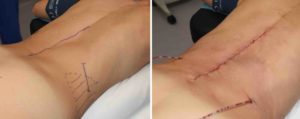
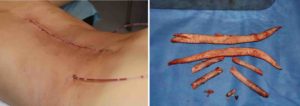
Case Highlights:
1) A midline back incisional approach was used in a patient who already had an existing midline back scar.
2) Approaching the lower ribs is done through a split latissimus dorsi muscle approach which then allows for a muscle narrowing procedure as well.
3) The midline back approach also allows for vertical skin removal from both sides of the skin flaps for a further horizontal waistline narrowing effect.
Dr. Barry Eppley
Indianapolis, Indiana

